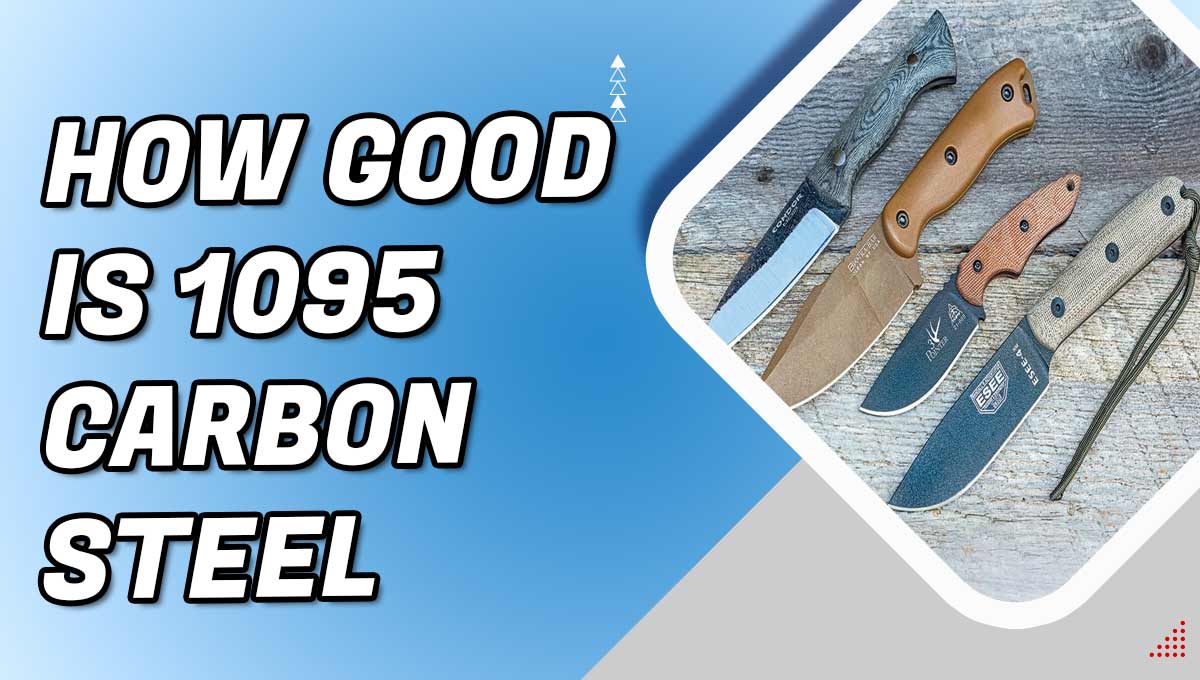Carbon steel is a type of steel that contains carbon as the main alloying element. The amount of carbon present in the steel determines its hardness, strength, and durability. Among the different types of carbon steel available in the market, 1095 carbon steel is highly regarded for its exceptional properties. In this article, we will explore the characteristics, advantages, and disadvantages of 1095 carbon steel, and why it is considered one of the best materials for knife-making.
What is 1095 Carbon Steel?
1095 carbon steel is a high-carbon, non-stainless steel that is commonly used for knife-making. It contains approximately 0.95% carbon, which makes it hard, durable, and capable of holding a sharp edge. It belongs to the 10xx series of steels, which are known for their high carbon content.
Properties of 1095 Carbon Steel
- Hardness: 58-60 HRC (Rockwell hardness scale)
- Toughness: Medium
- Corrosion Resistance: Low
- Wear Resistance: High
- Edge Retention: Excellent
- Sharpenability: Easy
Also Visit: Best Knife Set Under $200
Advantages of 1095 Carbon Steel
- Exceptional Edge Retention: 1095 carbon steel is capable of holding a sharp edge for a long time, making it ideal for knife-making.
- High Wear Resistance: It can withstand heavy use and abuse without losing its edge.
- Easy to Sharpen: It is relatively easy to sharpen 1095 carbon steel blades, even for beginners.
- Cost-Effective: It is an affordable steel that offers excellent performance for the price.
Disadvantages of 1095 Carbon Steel
- Low Corrosion Resistance: It is not resistant to rust or corrosion, which makes it prone to staining and pitting.
- Brittle: It is a hard and rigid steel that can be prone to chipping or cracking if subjected to excessive stress.
- Requires Regular Maintenance: To prevent corrosion, 1095 carbon steel blades need to be regularly cleaned, oiled, and stored properly.
Applications of 1095 Carbon Steel
Apart from knife-making, 1095 carbon steel is also used in a wide range of applications such as:
- Springs and high-strength components: Its high carbon content makes it suitable for making strong and durable components that require good wear resistance.
- Tools and machinery parts: Its toughness and durability make it ideal for making tools and machine parts that are subjected to heavy use and wear.
- Blades and swords: Its exceptional edge retention and high wear resistance make it a popular choice for making blades and swords.
How to Heat Treat 1095 Carbon Steel?
Heat treating is a crucial process in the manufacture of knives and other cutting tools made from 1095 carbon steel. The heat treatment process involves heating the steel to a specific temperature, holding it at that temperature for a specified time, and then cooling it at a controlled rate. The aim of heat treating is to optimize the steel’s properties for a specific application. Here are the steps for heat treating 1095 carbon steel:
- Preheat the furnace to 1,450°F (788°C) and place the steel in the furnace for about 10-15 minutes to ensure it is at the same temperature as the furnace.
- Raise the temperature of the furnace to 1,525°F (829°C) and hold it at that temperature for 5-10 minutes.
- Quench the steel in oil or water. Oil quenching will result in a slightly softer blade, while water quenching will result in a harder blade.
- Temper the blade by heating it to 350-400°F (177-204°C) for 1 hour per inch of thickness. This process will reduce the blade’s hardness and increase its toughness, making it less brittle and more resistant to chipping.
- Allow the blade to cool slowly to room temperature.
- Test the blade’s hardness using a Rockwell hardness tester. The ideal hardness for a knife blade made from 1095 carbon steel is between 58-60 HRC.
Remember to wear protective gear, such as gloves and eye protection, when heat treating 1095 carbon steel. Heat treating can be dangerous, and proper safety precautions should always be taken.
Conclusion
1095 carbon steel is a popular choice for knife and tool makers due to its high carbon content, which gives it excellent hardness and edge retention properties. However, it is important to properly heat treat and temper the steel to optimize its properties for a specific application. With proper care and maintenance, a knife made from 1095 carbon steel can provide reliable performance and durability for years to come. It is important to keep in mind that 1095 carbon steel is not stainless and requires regular maintenance to prevent rust and corrosion.
Frequently Asked Questions
What is 1095 carbon steel?
1095 carbon steel is a high carbon steel alloy that is commonly used in the manufacture of knives and other cutting tools. It contains approximately 0.95% carbon by weight, which gives it its hardness and edge retention properties.
What is the ideal temperature for heat treating 1095 carbon steel?
The ideal temperature for heat treating 1095 carbon steel is around 1,525°F (829°C).
Can 1095 carbon steel be tempered multiple times?
Yes, 1095 carbon steel can be tempered multiple times, but each tempering process will reduce the steel’s hardness and increase its toughness. It is important to not over-temper the steel, as this can result in a blade that is too soft.


